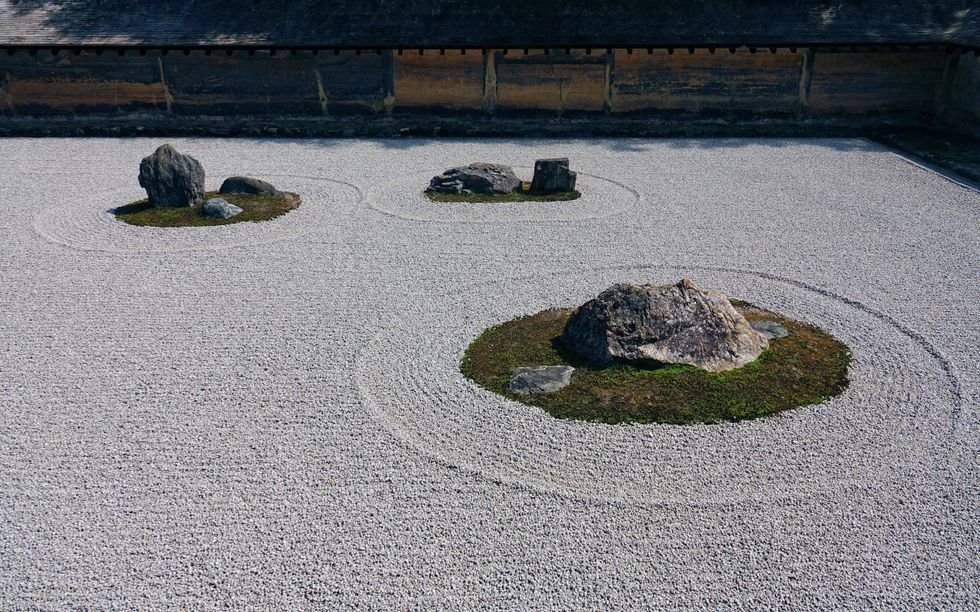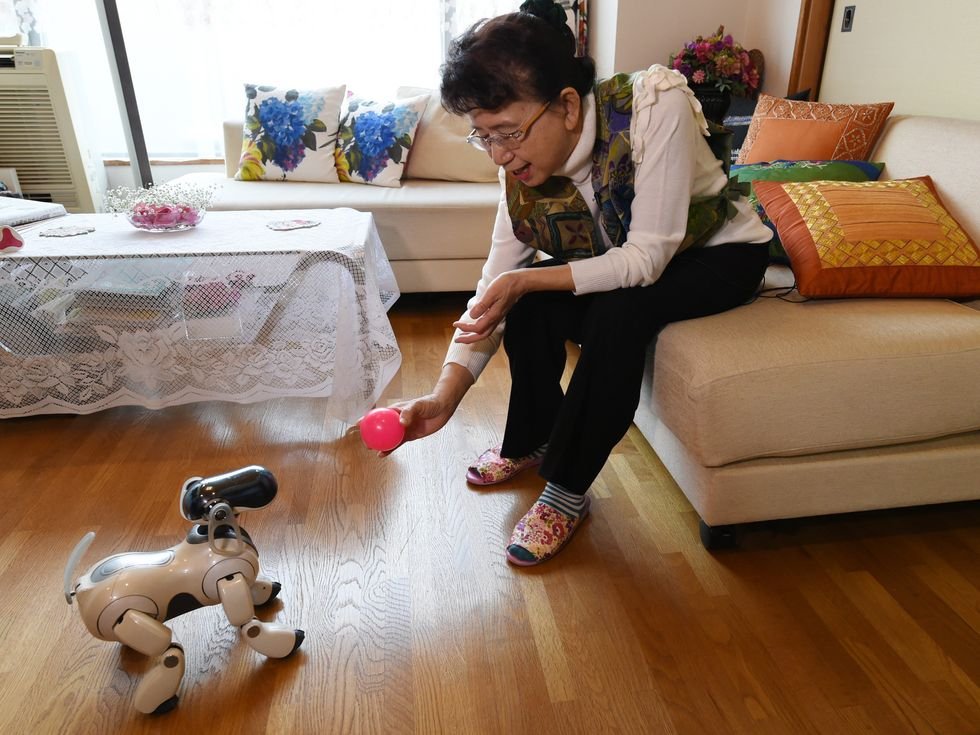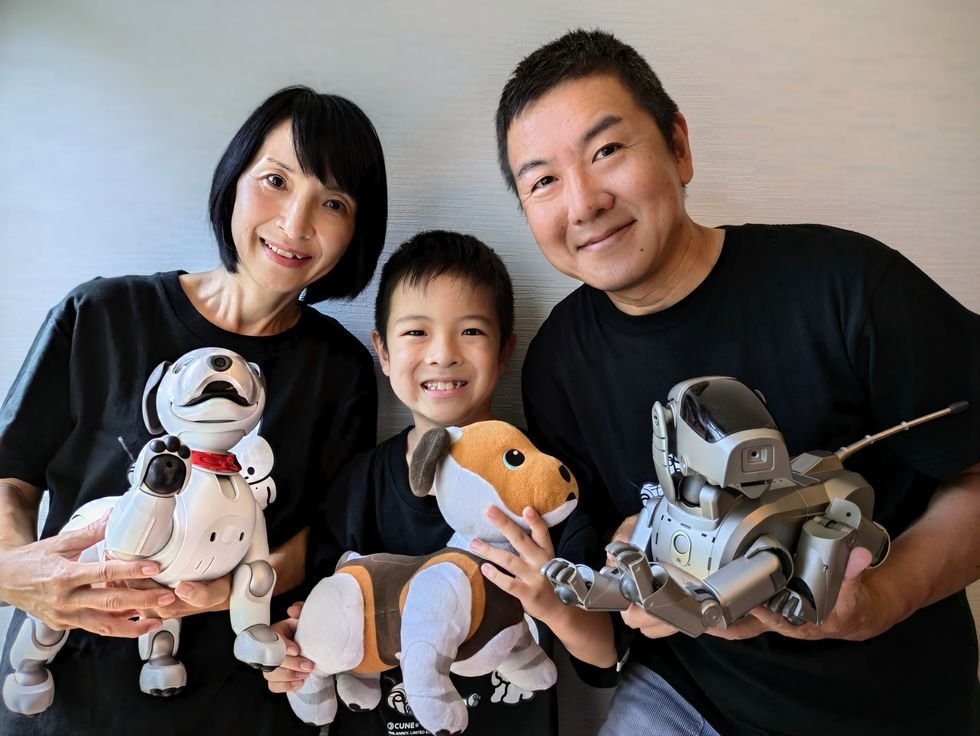
When Sony’s robotic pet, Aibo, was very first introduced in 1999, it was hailed as innovative and the very first of its kind, assuring to introduce a brand-new market of smart mobile equipments for the home. Yet its success was much from specific. Legged robotics were still in their early stage, and the concept of making an interactive strolling robotic for the customer market was astonishingly enthusiastic. Past the technological obstacles, Sony likewise needed to address a trouble that enjoyment robotics still battle with: exactly how to make Aibo engaging and appealing as opposed to merely unique.
Sony’s group made that take place. And considering that Aibo’s launching, the business has actually offered.
more than 170,000 of the adorable little quadrupeds– a substantial number considering their rate of numerous thousand bucks each. From the beginning, Aibo can share a series of substitute feelings and discover via its communications with customers. Aibo was an outstanding robotic 25 years back, and it’s still outstanding today.
Much from Sony head office in Tokyo, the community of Kōta, in Aichi Prefecture, is home to the Sony manufacturing facility that has actually made and fixed Aibos considering that 2018. Kōta has likewise come to be the facility of fandom for Aibo, considering that the Hummingbird coffee shop opened up in the Kōta City Center in 2021. The very first authorities Aibo coffee shop in Japan, it organizes Aibo-themed occasions, and Aibo proprietors from throughout the nation collect there to allow their Aibos loosened in a backyard and to trade Aibo name cards.
One customer of the Hummingbird coffee shop is seasoned Sony designer Hideki Noma. In 1999, prior to Aibo was Aibo, Noma visited his employer, Tadashi Otsuki. Otsuki had actually just recently gone back to Sony after a job at the Japanese enjoyment business Namco, and had actually been placed in cost of a deceptive brand-new task to develop a home entertainment robotic. Yet development had actually delayed. There was a model robot animal running around the laboratory, however Otsuki took a dark sight of its hyper actions and chose it had not been an item that anybody would certainly intend to acquire. He pictured something extra natural. Throughout their conference, he provided Noma a shocking item of suggestions: Most likely to Ryōan-ji, a well known Buddhist holy place in Kyoto. Otsuki was informing Noma that to create the best sort of robotic for Sony, it required Zen.
Aibo’s Goal: Make Background
When the Aibo task began in 1994, individual enjoyment robotics looked like an all-natural suitable for Sony. Sony was a worldwide leader in customer electronic devices. And in the 1990s, Japan had majority of the globe’s commercial robotics, controling a market led by makers like.
Fanuc andYaskawa Electric Robotics for the home were likewise being checked out. In 1996, Honda flaunted its P2 humanoid robotic, a model of the groundbreaking ASIMO, which would certainly be introduced in 2000. Electrolux, based in the UK, presented a model of its Trilobite robot hoover in 1997, and at iRobot in Boston, Joe Jones was dealing with what would certainly come to be theRoomba It appeared as though the customer robotic was obtaining closer to truth. Being the very first to market was the best possibility for an enthusiastic international business like Sony.

Aibo was the concept of Sony designer Toshitada Doi (on left), envisioned in 1999 with an Aibo ERS-111. Hideki Noma (on right) holds an Aibo ERS-1000. Raphael Gaillarde/Gamma-Rapho/Getty Images; Right; Timothy Hornyak
Sony’s brand-new robotic task was the creation of designer.
Toshitada Doi, co-inventor of the CD. Doi was influenced by the rate and dexterity of MIT roboticist Rodney Brooks’s Genghis, a six-legged insectile robotic that was developed to show standard self-governing strolling features. Doi, nevertheless, dreamt for an “enjoyment robotic without clear duty or task.” It was 1994 when his group of regarding 10 individuals started full-blown r & d on such a robotic.
Hideki Noma signed up with Sony in 1995. Also after that, he had a long-lasting love of robotics, consisting of joining robotics competitions and looking into humanoids in university. “I was appointed to the Sony robotic research study group’s enjoyment robotic division,” claims Noma. “It had actually simply been developed and had couple of individuals. No one recognized Sony was dealing with robotics, and it was a secret also within the business. I had not been also informed what I would certainly be doing.”.
Noma’s brand-new coworkers in Sony’s robotic skunk jobs had actually just recently mosted likely to Tokyo’s Akihabara electronic devices area and restored boxes of circuit card and servos. Their very first production was a six-legged pedestrian with antenna-like sensing units however even more portable than Brooks’s Genghis, at about 22 centimeters long. It was confusing and no place near adorable; if anything, it looked like a roach. “When they included the cam and various other sensing units, it was so hefty it could not stand,” claims Noma. “They understood it was mosting likely to be required to make whatever at Sony– electric motors, equipments, and all– or it would certainly not function. That’s when I signed up with the group as the boss of mechatronic style.”.
Noma, that is currently an elderly supervisor in Sony’s brand-new service growth department, keeps in mind that Doi’s catch phrase was “make background.” “Equally as he had actually made with the cd, he desired us to develop a robotic that was not just the very first of its kind, however likewise one that would certainly have a huge influence on the globe,” Noma remembers. “He constantly delicately motivated us with favorable responses.”.
” We likewise faced the concern of what an ‘enjoyment robotic’ can be. It needed to be something that would certainly amaze and thrill individuals. We really did not have a set concept, and we really did not laid out to develop a robotic pet.”.
The group did aim to living animals for ideas, researching pet and pet cat mobility. Their following model shed 2 of the 6 legs and obtained a head, tail, and extra innovative AI capabilities that developed the impression of canine qualities.
A mid-1998 variation of the robotic, nicknamed Mutant, operated on Sony’s.
Aperios OS, the os the business created to manage customer tools. The robotic had 16 levels of flexibility, a million-instructions-per-second (MIPS) 64-bit reduced-instruction-set computer system (RISC) cpu, and 8 megabytes of DRAM, expanding with a computer card. It can stroll on irregular surface areas and utilize its cam to acknowledge activity and shade– uncommon capabilities for robotics of the moment. It can dance, drink its head, wag its tail, rest, relax, bark, and it can also comply with a tinted round around. Actually, it was a little package of power.
Looks-wise, the crawler had a smooth brand-new “layer” made by Doi’s buddy.
Hajime Sorayama, a commercial developer and illustrator understood for his silvery gynoids, consisting ofthe cover art for an Aerosmith album Sorayama provided the robotic a glossy, round outside that made it unquestionably adorable. Noma, currently the group’s item organizer and software program designer, felt they were obtaining closer to the objective. Yet when he offered the model to Otsuki in 1999, Otsuki was not impressed. That’s when Noma was sent off to Ryōan-ji to identify exactly how to make the robotic appear not simply adorable however in some way to life
Looking For Zen for Aibo at the Rock Yard
Developed in 1450,.
Ryōan-ji is a Rinzai Zen shelter understood for its thoroughly raked rock yard including 5 unique teams of rocks. The rocks welcome onlookers to silently ponder the room, and possibly also deep space, which’s what Noma did. He understood what Doi desired Aibo to share: a feeling of peace. The exact same principle had actually been integrated right into the style of what was probably Japan’s very first humanoid robotic, a big, grinning robot called Gakutensoku that was introduced in 1928.


The rock yard at the Ryōan-ji Zen holy place includes meticulously made up groups of rocks with unidentified definition.Bjørn Christian Tørrissen/Wikipedia
Roboticist.
Masahiro Mori, pioneer of the Uncanny Valley principle for android style, had actually covered the partnership in between Buddhism and robotics back in 1974, mentioning, “I think robotics have the Buddha-nature within them– that is, the capacity for achieving Buddhahood.” Basically, he thought that also nonliving points were imbued with spirituality, an idea connected to animism in Japan. If equipments can be considered personifying peace and spirituality, they can be much easier to associate with, like living points.
” When you make a robotic, you intend to reveal what it can do. Yet if it’s constantly executing, you’ll obtain burnt out and will not intend to deal with it,” claims Noma. “Equally as felines and pets require silent time and remainder, so do robotics.” Noma customized the robotic’s habits to make sure that it would certainly often reduce and rest. This strengthened the impression that it was not just to life however had a will of its very own. Otsuki after that provided the little robotic pet the thumbs-up.
The cybernetic dog was called Aibo for “Expert system robotic” and.
aibō, which implies “companion” in Japanese.
In a.
press release, Sony billed the maker as “a self-governing robotic that acts both in action to exterior stimulations and according to its very own judgment. ‘AIBO’ can share different feelings, expand via knowing, and connect with humans to bring a totally brand-new kind of enjoyment right into the home.” Yet it was a great deal even more than that. Its 18 levels of flexibility permitted intricate movements, and it had a shade charge-coupled gadget (CCD) cam and sensing units for touch, velocity, angular speed, and array searching for. Aibo had the equipment and smarts to support Sony’s insurance claim that it can “act like a living animal.” The reality that it could not do anything functional came to be unimportant.
The launching Aibo ERS-110 was valued at 250,000 yen (United States $2,500, or a little over $4,700 today). A movement editor set, which permitted customers to produce initial Aibo movements using their computer, cost 50,000 yen ($ 450). Regardless of the eye-watering price, the very first set of 3,000 robotics offered out in 20 mins.
Noma had not been amazed by the immediate success. “We intended to recognize a culture in which individuals and robotics can exist side-by-side, not simply robotics helping people however both taking pleasure in a partnership of trust fund,” Noma claims. “Based upon that, a home entertainment robotic with a feeling of self can connect with individuals, expand, and discover.”.


Hideko Mori plays bring with her Aibo ERS-7 in 2015, after it was gone back to her from an Aibo medical facility. Aibos are preferred with senior citizens in Japan, supplying interactivity and friendship without needing the degree of treatment of an actual pet. Toshifumi Kitamura/AFP/Getty Pictures
Aibo as a Social Sensation
Aibo was the very first customer robotic of its kind, and over the following 4 years, Sony launched numerous variations of its preferred dog throughout 2 even more generations. Some client reactions were unforeseen: as a pet dog and buddy, Aibo was aiding empty-nest pairs revive their partnership, boosting the lives of kids with autism, and having a favorable result on customers’ moods, according to.
a 2004 paper by AI professional Masahiro Fujita, that teamed up with Doi on the very early variation of Aibo.
” Aibo damaged brand-new ground as a social companion. While it had not been a substitute for an actual animal, it presented an entirely brand-new group of buddy robotics made to deal with people,” claims.
Minoru Asada, teacher of flexible maker systems at Osaka College’s graduate institution of design. “It assisted cultivate psychological links with a maker, affecting exactly how individuals checked out robotics– not equally as devices however as entities with the ability of developing social bonds. This change in assumption unlocked to wider conversations regarding human-robot communication, friendship, and also psychological interaction with fabricated beings.”.
Structure a Custom-made Robotic
- To develop Aibo, Noma and coworkers needed to go back to square one– there were no common CPUs, cams, or running systems for customer robotics. They needed to develop their very own, and the outcome was the Sony Open-R style, an uncommon method to robotics that made it possible for the structure of customized equipments.
- Announced in 1998, a year prior to Aibo’s launch, Open-R permitted customers to switch out modular equipment parts, such as legs or wheels, to adjust a robotic for various functions. High-speed serial buses sent information installed in each component, such as feature and setting, to the robotic’s CPU, which would certainly choose the proper control signal for the brand-new component. This implied the maker can still utilize the exact same motion-control software program with the brand-new parts. The software program relied upon plug-and-play prerecorded sd card, to make sure that the actions of an Open-R robotic can quickly transform, claim, from being a pleasant animal to a tough challenger in a video game. A swap of sd card can likewise provide the robotic photo- or sound-recognition capabilities.
- ” Individuals can transform the modular software and hardware parts,” claims Noma. “The concept was having the capability to include a remote-control feature or swap legs for wheels if you desired.”
- Various other renovations consisted of various shades, touch sensing units, LED faces, psychological expressions, and much more software program alternatives. There was also an Aibo that resembled a lion cub. The different versions finished in the smooth ERS-7, launched in 3 variations from 2003 to 2005.
- Based Upon Scrape, the aesthetic programs system in the current variations of Aibo is simple to utilize and allows proprietors with restricted programs experience develop their very own complicated programs to change exactly how their robotic acts.
- The Aibo ERS-1000, introduced in January 2018, has 22 levels of flexibility, a 64-bit quad-core CPU, and 2 OLED eyes. It’s even more puppylike and smarter than previous versions, with the ability of identifying 100 faces and reacting to 50 voice commands. It can also be “potty educated” and “fed” with online food via an application.
— T.H.
Aibo likewise played a vital duty in the development of self-governing robotics, specifically in competitors like.
RoboCup, keeps in mind Asada, that cofounded the robotic football competitors in the 1990s. Whereas custom-made robotics were vulnerable to equipment failings, Aibo was continually trusted and programmable, therefore it permitted rivals to concentrate on progressing software program and AI. It came to be an essential device for screening formulas in real-world settings.
By the very early 2000s, nevertheless, Sony remained in difficulty. Leading the smart device transformation, Apple and Samsung were progressively trying Sony’s setting as a consumer-electronics and digital-content giant. When Howard Stringer was assigned Sony’s very first non-Japanese chief executive officer in 2005, he executed an uncomfortable restructuring program to make the business extra affordable. In 2006, he closed down the robotic enjoyment department, and.
Aibo was put to sleep
What Sony’s execs might not have actually valued was the commitment and eagerness of Aibo purchasers. In an application to maintain Aibo to life, someone composed that the robotic was “an irreplaceable relative.” Aibo proprietors were calling their robotics, describing them with words.
ko (which typically signifies kids), taking pictures with them, taking place journeys with them, clothing them up, enhancing them with bows, and also taking them out on “days” with various other Aibos.
For Noma, that has 4 Aibos in your home, this interest was understandable.


Hideki Noma [right] positions with his child Yuto and better half Tomoko together with their Aibo buddies. At right is an ERS-110 called Robbie (influenced by Isaac Asimov’s “I, Robotic”), at the facility is a deluxe Aibo called Choco, and left wing is an ERS-1000 called Murphy (influenced by the movie Interstellar).
Hideki Noma.
” Some proprietors deal with Aibo as a pet dog, and some reward it as a member of the family,” he claims. “They commemorate its ongoing wellness and development, observe the typical Shichi-Go-San party [for children aged 3, 5, and 7] and clothe their Aibos in bathrobes … This concept of robotics as buddies or family members is certain to Japan and can be seen in anime like.
Astro Young Boy and Doraemon It’s all-natural to see robotics as buddies we speak with and often say with.”.
The Return of Aibo
With the interest of Aibo followers undiminished and the proceeded development of sensing units, actuators, connection, and AI,.
Sony decided to resurrect Aibo after 12 years. Noma and various other designers went back to the group to deal with the brand-new variation, the Aibo ERS-1000, which was introduced in January 2018.
Followers of any ages were delighted. Valued at 198,000 yen ($ 1,760), not consisting of the obligatory 90,000-yen, three-year cloud membership solution, the very first set offered out in thirty minutes, and 11,111 devices offered in the very first 3 months. Ever since, Sony has actually launched extra variations with brand-new style attributes, and the business has likewise.
opened up Aibo to some degree of programming, providing customers accessibility to aesthetic programs devices and an application programs user interface (API).
A quarter century after Aibo was introduced, Noma is ultimately carrying on to an additional task at Sony. He reviews his 17 years creating the robotic with wonder. “Despite the fact that we visualized a culture of people and robotics existing side-by-side, we never ever fantasized Aibo can be dealt with as a member of the family according to it is,” he claims. “We saw this both in the earlier variations of Aibo and the current generation. I’m deeply thankful and relocated by this. My desire is that this partnership will certainly proceed for a long period of time.”.
发布者:Tim Hornyak,转转请注明出处:https://robotalks.cn/zen-and-the-art-of-aibo-engineering/
